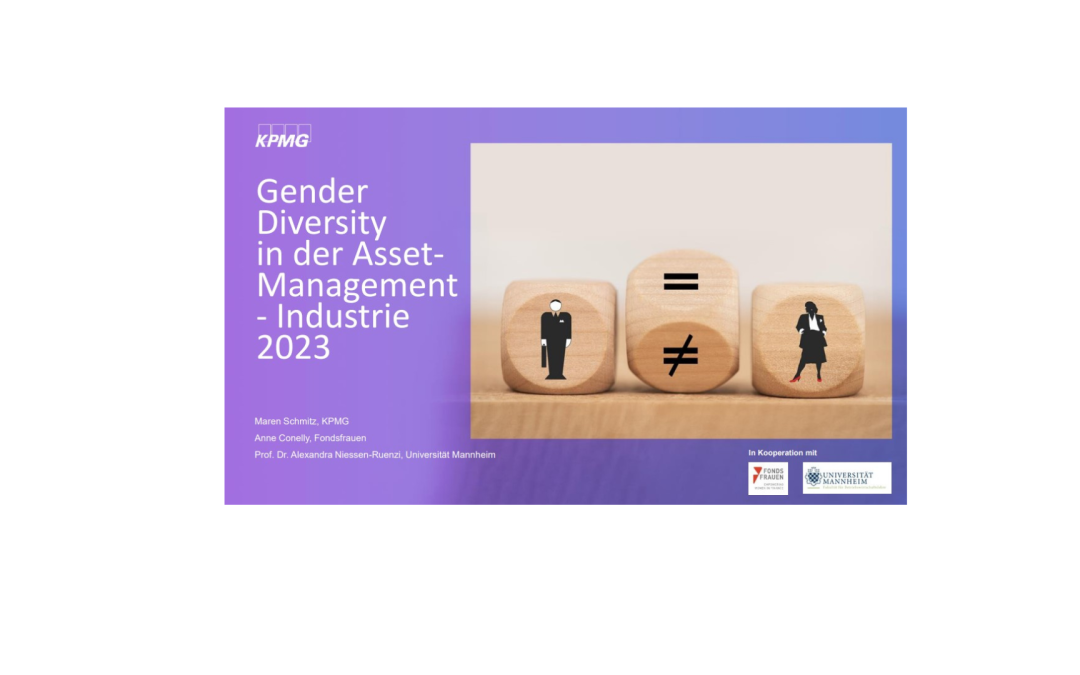The professional network "Fondsfrauen" is campaigning for more gender diversity in the asset management industry. In order to be able to name and address possible grievances, we need reliable figures. We collect these at regular intervals - for the German-speaking area. For example, we are now publishing our fourth study "Gender Diversity in the Asset Management Industry", which we conducted in cooperation with the University of Mannheim and KPMG Germany.
here you can download the brochure of the study
here you can watch the video to the study
Hier könnt Ihr den Artikel vom Handelsblatt dazu lesen
Proportion of female applicants increases
To sum up: improvements in gender diversity are extremely slow to materialise, but they do exist. On a positive note, the proportion of female applicants has increased. While in 2020 the proportion of female applicants was still 26%, in the 2022 financial year it rose by a remarkable 10 percentage points to 36%.
This suggests that the negative image that the financial industry has had among young women for a long time is slowly improving. In times of skills shortages, it is important that the financial industry exploits the potential of young people as fully as possible - both among men and women.
Promotions still include more men than women, but the results are converging. Of all employees promoted in the 2022 financial year, 48% were women and 52% men. The ratio within the gender groups is somewhat different: Of all employed women, 3.5% were promoted, while of all employed men, 4.75% were promoted.
The companies surveyed cite the lack of female candidates for promotion and the generally lower presence of women in companies as the main reasons. They also stress that female candidates have less visibility and networking.
Still few women in leading positions
What has remained is the fact that significantly fewer women than men are employed in higher positions in the companies. While on average 40% women and 60% men work in the companies, the share of female employees in management positions is only 26%, and in the executive committees it is only 21%. The share of women at management/executive level and on supervisory and administrative boards is once again significantly lower at 13%.
This shows that the trend in the proportion of women in management/leadership has changed little since 2015. In 2015, it was 12%, rising to a hopeful 16% in 2017. However, in the study results, which refer to data from 2020 and 2022, the share has fallen back to 13% in both cases.
However, there is a significant proportion of women on the Executive Committees: In 2015, only 8% of the members of the Executive Committee were women; however, the proportion has since risen to 21% in the 2022 business year.
Pink ghettos dissolve only slowly
As already noted in previous years, there are "pink ghettos" in which a particularly large number of women are to be found. These traditionally include human resources (73% female share), marketing (58%) and compliance (53%), all of which are among the more service-oriented areas of the company.
However, there is a trend for women to be increasingly found in quantitative areas such as portfolio management, but the changes are moderate. The business areas with the lowest proportions of women are still IT/Organisation (19% share of women), Sales / Field Service (35%) and Portfolio Management (35%). Even though this is already an improvement compared to the results from previous years - especially in Sales and Portfolio Management - , there is still a need here for targeted measures to promote gender diversity in all business areas.
Transparency slightly increased - but not in pay transparency
Compared to the last survey, the companies surveyed show a higher willingness to implement quantitative targets such as women's quotas to improve gender diversity. Nevertheless, the three most frequently established targets among the companies are rather "loose" targets: A sponsorship programme for women, promoted women's networks and the appointment of a diversity officer.
More quantitative measures are increasing, but are still not widespread. For example, in 2022, 17% specify a certain percentage for women on the short list in key positions (in 2020 it was only 9%). 17% have a specific quota for hiring and promotion, and also 17% of companies aim for a specific target for the retention rate of female employees in middle and senior management.
There is still great reluctance to calculate pay inequalities between male and female employees. This is surprising given the fact that the Pay Transparency Act was already introduced in Germany in 2017. Within the scope of this year's study, 36% of companies stated that they were covered by the Remuneration Transparency Act
The question of whether an equal pay policy was established was answered by 33% with "yes", 27% with "no" and 40% did not provide any information. As in the 2020 survey, none of the companies surveyed were willing to state the wage difference between male and female employees or to calculate it for the survey. For internal use, none of the companies surveyed calculated this difference, and only three companies plan to do so in the future. This suggests that the issue of equal gender pay is still seen as very sensitive and conflictual in Germany. Here, the European Corporate Sustainability Directive (CSRD), which was passed in November 2022, could provide more transparency in the future. It specifies key performance indicators (KPIs) for gender diversity that are either mandatory or voluntary to report.
Overall, it can be seen that the companies surveyed are clearly reluctant to introduce fixed quota systems, while qualitative measures are already an integral part in the majority of the companies.
Data collection
The data was collected between March and May 2023 and relates to the 2022 financial year. The responding companies come from the countries Germany, Austria, Switzerland and represent a global volume of almost 4,780 billion AuM.



